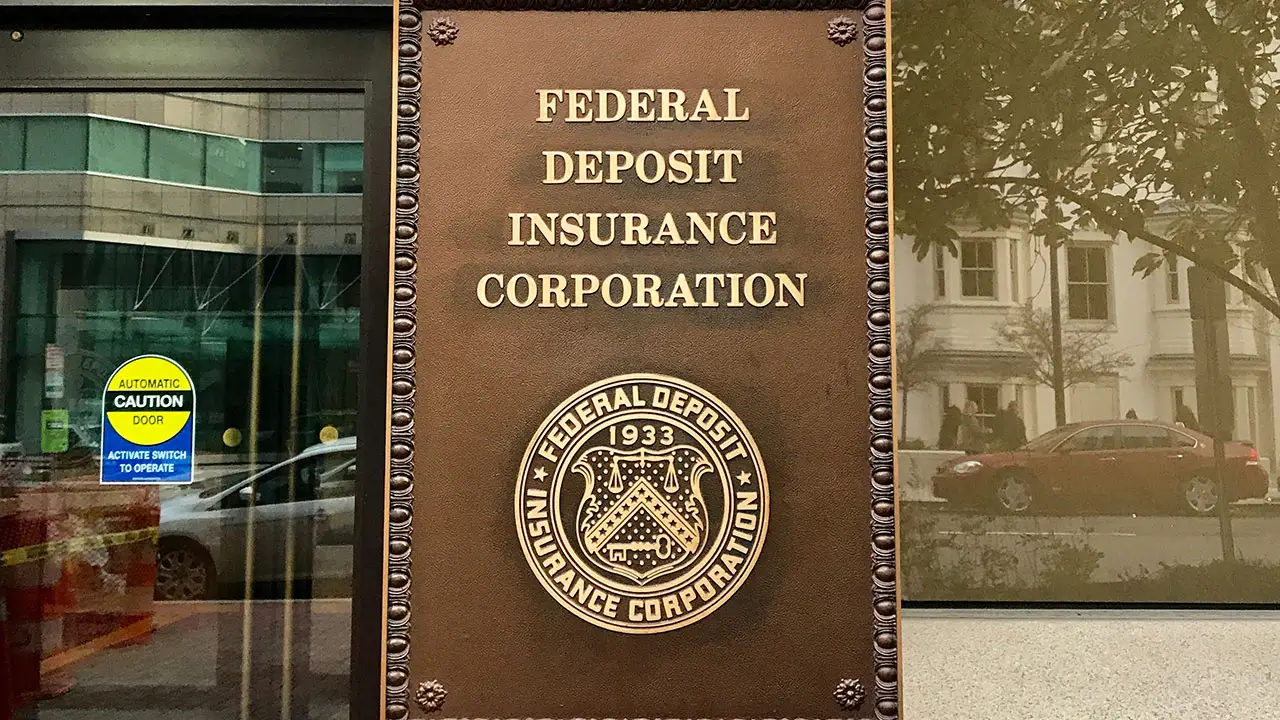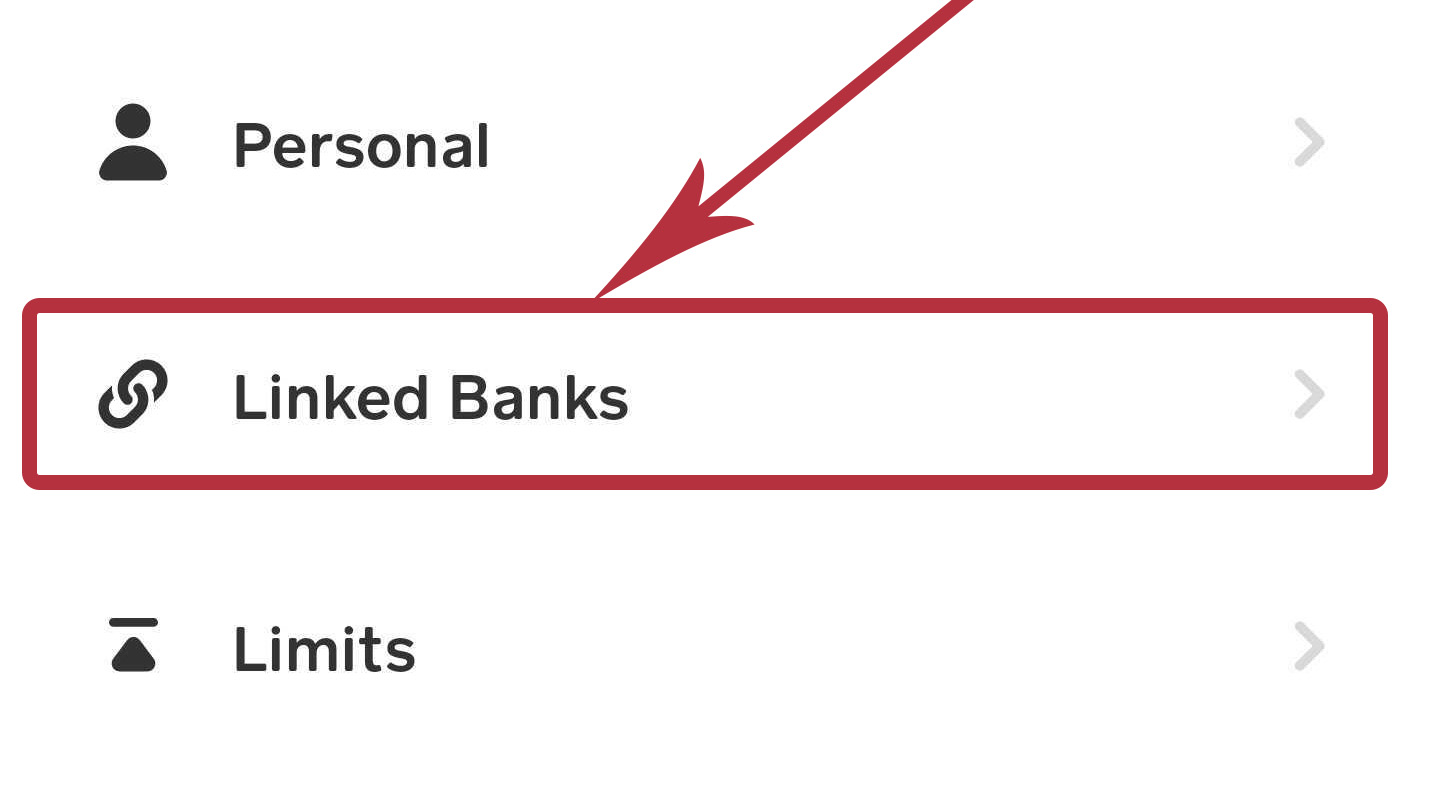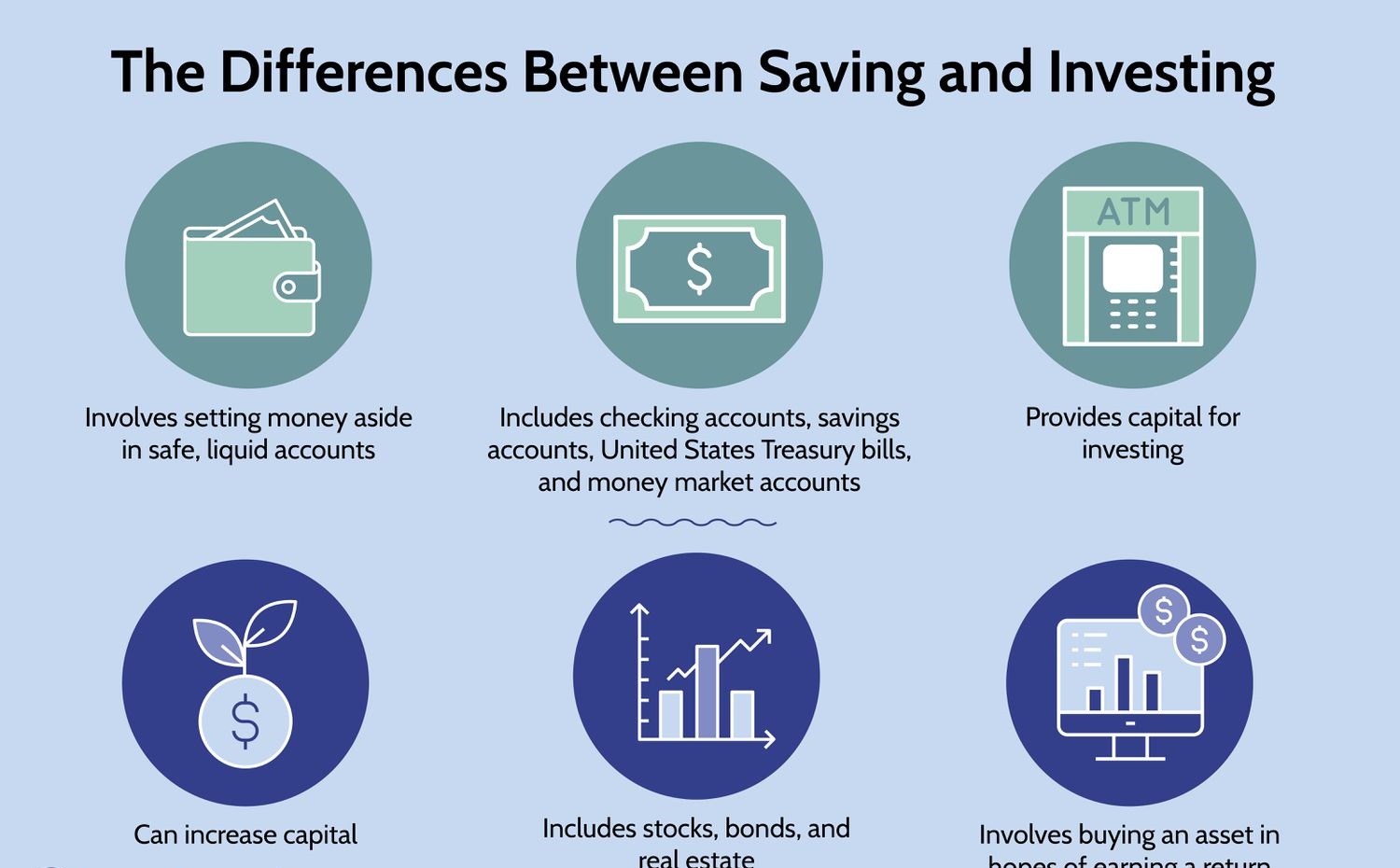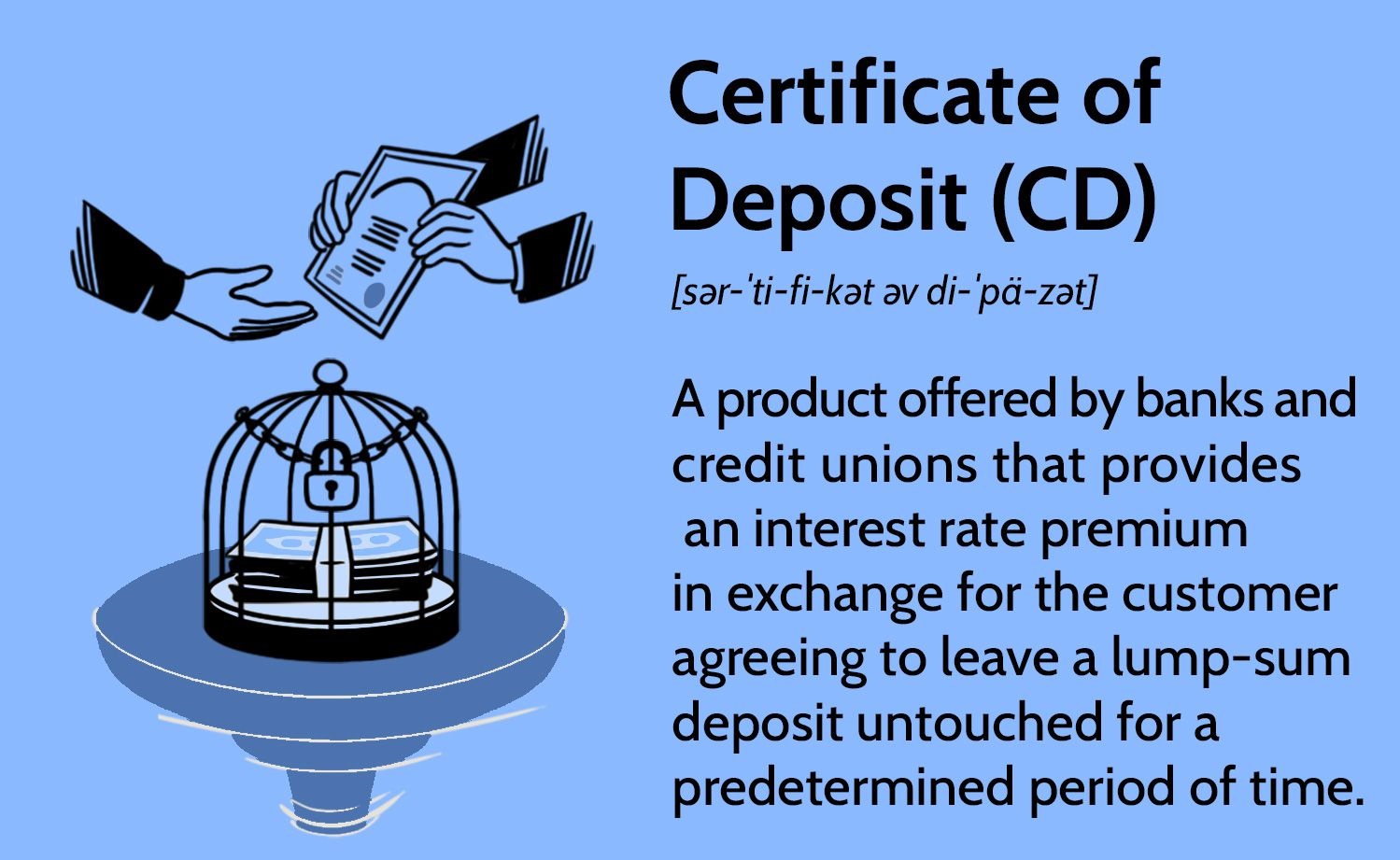Introduction
When it comes to keeping your money safe, understanding the ins and outs of the banking system is crucial. One key aspect of ensuring the security of your funds is knowing about the Federal Deposit Insurance Corporation, commonly known as the FDIC. Whether you’re a seasoned investor or just starting to build your financial portfolio, it’s essential to have a clear understanding of what the FDIC is and how it operates.
The FDIC is an independent agency of the United States government that provides deposit insurance for individuals and businesses in the event of a bank failure. It was established in 1933 as a response to the widespread bank failures during the Great Depression. Since its inception, the FDIC has been instrumental in maintaining trust and stability in the banking system.
The primary purpose of the FDIC is to protect depositors by insuring their deposits up to a certain limit in case their bank experiences financial difficulties or fails. This insurance provides peace of mind to consumers and instills confidence in the banking system as a whole. The FDIC achieves this by assessing financial institutions, supervising their operations, and resolving failed banks in an orderly manner.
Understanding how the FDIC works is essential to grasp the benefits it offers. When you deposit money into an FDIC-insured bank, your funds are protected up to $250,000 per depositor, per account category. This means that even if your bank collapses, you will still have access to your insured deposits. The FDIC uses funds collected from insured banks to protect depositors, ensuring the stability of the financial system.
While the FDIC provides invaluable protection for depositors, it’s important to acknowledge its limitations. For instance, the FDIC does not insure investments such as stocks, bonds, or mutual funds. Additionally, the $250,000 insurance limit is per depositor, per account category. If you have more than one account type in the same bank, such as a checking account and a savings account, each account is insured separately.
To verify if your bank is FDIC insured, you can easily check the FDIC’s website or look for the FDIC logo displayed at your bank. Remember that FDIC insurance applies to most traditional deposit accounts, including checking, savings, and some retirement accounts such as IRAs.
Understanding the fundamentals of the FDIC is essential to safeguarding your financial well-being. By having a strong grasp of the FDIC’s purpose, operation, and limitations, you can make informed decisions when choosing a bank and managing your funds. So, let’s dive into the details and explore all you need to know about the FDIC and its role in the banking industry.
What is FDIC?
The Federal Deposit Insurance Corporation, better known as the FDIC, is an independent agency of the United States government. It was established in 1933 as a response to the widespread bank failures during the Great Depression. Its main purpose is to protect depositors by providing deposit insurance for individuals and businesses in case of a bank failure.
The FDIC operates as an insurance fund, guaranteeing the safety of deposits at insured banks. When you deposit money into an FDIC-insured bank, your funds are protected up to $250,000 per depositor, per account category. This means that even if your bank fails, you will still have access to your insured deposits. The FDIC achieves this by assessing premiums from insured banks and managing those funds to ensure the stability of the financial system.
It’s important to note that the FDIC only insures deposits and not other types of financial products, such as stocks, bonds, or mutual funds. It primarily provides coverage for traditional deposit accounts, including checking, savings, and some retirement accounts.
The FDIC plays a crucial role in promoting stability and confidence in the banking system. By providing deposit insurance, it helps maintain trust between consumers and financial institutions. This assurance encourages individuals and businesses to continue depositing their money in banks, knowing that their funds are protected should the bank face financial difficulties or even fail.
In addition to providing deposit insurance, the FDIC also supervises and regulates insured banks. It monitors their activities to ensure compliance with banking laws and regulations, as well as to identify and address any potential risks. By doing so, the FDIC helps prevent problems before they escalate and maintains the overall stability of the banking industry.
The FDIC has proven to be an essential component of the U.S. banking system. Its presence and guarantee of deposit insurance provide peace of mind to depositors, helping to prevent bank runs and maintain overall financial stability. By understanding what the FDIC is and how it operates, individuals can make informed decisions about their banking relationships and ensure the safety of their deposits.
History of FDIC
The history of the Federal Deposit Insurance Corporation (FDIC) dates back to the early 1930s during one of the darkest periods in American economic history – the Great Depression. The severe economic downturn led to numerous bank failures and widespread panic, causing people to lose trust and withdraw their money from financial institutions.
Recognizing the urgent need to restore confidence in the banking system, the U.S. government took decisive action. On June 16, 1933, President Franklin D. Roosevelt signed the Banking Act, which officially created the FDIC. The establishment of the FDIC was a key component of Roosevelt’s New Deal, aimed at providing relief, recovery, and reform following the economic devastation of the Great Depression.
When the FDIC was first established, the banking industry faced significant challenges. The lack of deposit insurance meant that people had no guarantee their money would be safe if a bank failed. As a result, bank failures were common, further exacerbating the financial crisis and causing widespread panic.
To address this issue, the FDIC was entrusted with the responsibility of ensuring the safety of depositors’ funds. The agency provided deposit insurance, which meant that if a bank failed, eligible depositors would receive their money back up to a certain limit. This reassured the public and restored trust in the banking system.
Since its inception, the FDIC has undergone several key developments and reforms to adapt to changing economic conditions and improve its effectiveness. One notable milestone in the history of the FDIC was the passage of the Financial Institutions Reform, Recovery, and Enforcement Act (FIRREA) in 1989. This legislation expanded the FDIC’s authority to regulate and supervise financial institutions, allowing it to intervene and take necessary action to prevent potential bank failures.
Over the years, the FDIC has played a vital role in stabilizing the banking industry. It has been instrumental in effectively managing and resolving failed banks, protecting depositors’ funds, and maintaining public confidence. The FDIC’s ability to handle bank failures in an orderly manner has helped prevent widespread financial crises, ensuring overall stability in the banking system.
As the FDIC continues to evolve, it remains committed to its primary mission – protecting depositors and maintaining the stability of the banking system. Through its ongoing supervision, regulation, and insurance programs, the FDIC aims to create a safe and secure environment for individuals and businesses to entrust their funds to financial institutions.
The history of the FDIC serves as a reminder of the importance of a strong and well-regulated banking system. It highlights the necessity of deposit insurance to safeguard the public’s trust, prevent bank runs, and provide stability during periods of economic uncertainty.
Purpose of FDIC
The Federal Deposit Insurance Corporation (FDIC) serves a crucial purpose in the United States banking system. Its primary role is to protect depositors and maintain the stability of the financial industry. The FDIC achieves this through several key objectives.
First and foremost, the purpose of the FDIC is to provide deposit insurance. When individuals or businesses deposit their money in an FDIC-insured bank, their funds are protected up to $250,000 per depositor, per account category. This insurance ensures that depositors will have access to their insured funds even if their bank encounters financial difficulties, such as insolvency or bankruptcy. By safeguarding deposits, the FDIC helps instill confidence in the banking system and encourages individuals to continue depositing their money in insured banks.
Another significant purpose of the FDIC is to promote financial stability. The FDIC works to prevent bank failures by monitoring and supervising insured financial institutions. It assesses the financial health of banks and identifies potential risks or vulnerabilities. Through its regulatory oversight, the FDIC aims to ensure that banks operate in a safe and sound manner. By addressing issues before they escalate, the FDIC helps maintain the overall stability of the banking industry and safeguards the interests of depositors.
The FDIC also plays a critical role in resolving failed banks. In the event that a bank fails, the FDIC steps in to protect depositors and minimize disruption to the financial system. The agency takes over the management of the failed bank and works to find a suitable resolution, whether through minimizing losses to the deposit insurance fund or facilitating the acquisition of the failed bank by another institution. By effectively managing bank failures, the FDIC helps maintain the stability of the banking system and ensures that depositors’ funds are protected.
Furthermore, the FDIC aims to promote public confidence in the banking system. By providing deposit insurance, the agency demonstrates its commitment to protecting the interests of depositors. This assurance encourages individuals and businesses to entrust their funds to insured banks, knowing that their money is secure. The FDIC’s role in maintaining the integrity and stability of the banking industry helps instill public trust and confidence, ensuring the smooth functioning of the financial system.
Lastly, the FDIC has a consumer protection role. It ensures that banks comply with consumer financial protection laws and regulations. It investigates and addresses issues related to unfair or deceptive practices, providing a mechanism for consumers to seek recourse for any harm or wrongdoing they may experience in their banking relationships. By promoting fair and transparent banking practices, the FDIC helps protect the rights and interests of consumers.
In summary, the purpose of the FDIC is to protect depositors, maintain financial stability, resolve failed banks, promote public confidence, and safeguard consumer rights. Through its various functions and initiatives, the FDIC plays a vital role in ensuring the safety and soundness of the banking system, benefiting both individuals and businesses alike.
How Does FDIC Work?
The Federal Deposit Insurance Corporation (FDIC) operates through a system of deposit insurance and regulation to protect depositors and maintain stability in the banking industry.
When you deposit money into an FDIC-insured bank, your funds are protected up to $250,000 per depositor, per account category. This means that even in the event of a bank failure, your insured deposits are guaranteed by the FDIC. The FDIC accomplishes this by assessing premiums from insured banks and maintaining a deposit insurance fund.
FDIC-insured banks pay annual premiums to the FDIC based on the amount of deposits held by the bank. These premiums contribute to the deposit insurance fund, from which the FDIC draws resources to protect depositors in the event of a bank failure. The FDIC sets the premium rates based on the risk profile of each insured bank, ensuring that riskier banks pay higher premiums.
In addition to deposit insurance, the FDIC also plays a crucial role in supervising and regulating insured financial institutions. It conducts regular examinations of insured banks to assess their safety and soundness, compliance with regulations, and overall risk management practices. Through its regulatory oversight, the FDIC helps detect potential risks and takes appropriate actions to address them, ensuring the stability of the banking system.
If a bank does fail, the FDIC steps in to resolve the situation in an orderly manner. The FDIC may take several approaches to resolve a failed bank, including selling the assets and liabilities of the failed bank to another institution, paying insured depositors directly, or creating a bridge bank to temporarily operate the failed institution until a suitable resolution is found. These actions are aimed at minimizing disruptions to the financial system and protecting depositors’ funds.
It’s important to understand that the FDIC does not guarantee the safety of all financial products offered by banks. While it provides deposit insurance for traditional deposit accounts such as checking and savings accounts, it does not cover investments such as stocks, bonds, or mutual funds. It’s crucial for individuals to carefully read the terms and conditions of financial products and understand what is covered under the FDIC’s insurance.
To ensure transparency and public awareness, the FDIC maintains an online database called the BankFind tool. This tool allows individuals to check if their bank is FDIC insured and provides important information about the bank’s status and history.
In summary, the FDIC works by providing deposit insurance to protect depositors in the event of a bank failure, supervising and regulating insured banks, and resolving failed banks in an orderly manner. By maintaining the deposit insurance fund, conducting examinations, and taking necessary actions, the FDIC plays a vital role in promoting stability and ensuring the safety of the U.S. banking system.
Benefits of FDIC
The Federal Deposit Insurance Corporation (FDIC) provides several key benefits to depositors and the banking system as a whole. Understanding these benefits can help individuals make informed decisions regarding their banking relationships and provide peace of mind when it comes to the security of their funds.
1. Protection of Deposits: The primary benefit of the FDIC is the protection it offers to depositors. By insuring deposits up to $250,000 per depositor, per account category, the FDIC ensures that even if a bank fails, depositors will have access to their insured funds. This protection promotes confidence and trust in the banking system, encouraging individuals to continue depositing their money in insured banks.
2. Stability of the Banking System: The FDIC plays a vital role in maintaining stability in the banking industry. Through its regulatory oversight and supervision, the FDIC helps prevent bank failures by identifying and addressing potential risks. By ensuring that banks operate in a safe and sound manner, the FDIC helps maintain the overall stability of the banking system, benefiting both depositors and financial institutions.
3. Prevention of Bank Runs: The presence of the FDIC and its deposit insurance program helps prevent bank runs, which can have severe consequences on the financial system. Deposit insurance provides assurance to depositors that their funds are protected, reducing the fear of losing their money and preventing mass withdrawals. This stability allows banks to continue their operations without disruptions and maintains public confidence in the banking system.
4. Financial Literacy and Education: The FDIC is committed to promoting financial literacy and education. It provides resources and educational materials to help individuals understand the importance of financial responsibility and make informed decisions. By empowering individuals with financial knowledge, the FDIC enhances consumers’ ability to protect their assets, manage their finances, and make sound financial choices.
5. Consumer Protection: The FDIC plays a role in protecting the rights and interests of consumers. It ensures that insured banks comply with consumer financial protection laws and regulations. The FDIC investigates complaints and takes necessary actions against banks engaging in unfair or deceptive practices. This consumer protection helps safeguard individuals from fraudulent activities and promotes fair and transparent banking practices.
6. Depository Choices: The FDIC’s deposit insurance program allows individuals to have a wide range of options when selecting a bank. Knowing that their deposits are protected, individuals can choose banks that offer competitive interest rates, convenient services, and other features that align with their preferences. This competition among financial institutions benefits consumers by providing them with a variety of banking choices.
In summary, the benefits of the FDIC include the protection of deposits, stability of the banking system, prevention of bank runs, financial literacy and education, consumer protection, and the availability of a wide range of depository choices. These benefits contribute to the overall integrity and trustworthiness of the banking system and provide individuals with confidence and security in managing their financial assets.
Limitations of FDIC
While the Federal Deposit Insurance Corporation (FDIC) plays a crucial role in safeguarding depositors and maintaining stability in the banking industry, it also has certain limitations that individuals should be aware of. Understanding these limitations can help depositors make informed decisions about their banking relationships and manage their financial risks effectively.
1. Coverage Limits: The FDIC insures deposits up to $250,000 per depositor, per account category. This means that if a depositor has multiple accounts at the same bank, such as a checking account and a savings account, the $250,000 limit applies to each account separately. If a depositor holds more than $250,000 in a single account or across multiple accounts in the same category, the amount exceeding the limit is not covered by FDIC insurance.
2. Non-Insured Products: It’s important to note that the FDIC only provides deposit insurance for traditional deposit accounts, such as checking, savings, and some retirement accounts like IRAs. Investments such as stocks, bonds, mutual funds, and annuities are not covered by FDIC insurance. Individuals should carefully review their financial products and understand which ones are eligible for FDIC insurance coverage.
3. Temporary Increase in Coverage: The $250,000 coverage limit per depositor, per account category applies to most FDIC-insured banks. However, in certain cases of temporary account ownership, such as joint accounts, trust accounts, and accounts with beneficiaries, the coverage limit may be higher. Individuals should consult the FDIC’s rules and regulations or seek guidance from their financial institution to determine the appropriate coverage for their specific account types.
4. Institutional Failures: While the FDIC aims to prevent bank failures through regulation and supervision, it cannot guarantee that all banks will remain solvent. In the event of a bank failure, there may be instances where the FDIC is unable to return 100% of insured deposits due to the complexities of the bank’s financial situation. However, the FDIC typically works to find a resolution that maximizes the recovery of depositors’ funds.
5. Market Conditions: The FDIC’s ability to protect depositors is contingent on the overall strength of the financial system. Economic downturns or systemic financial crises can pose challenges to the FDIC’s ability to handle widespread bank failures effectively. While the FDIC has mechanisms in place to manage such situations, these extraordinary circumstances may impact the speed and efficiency of resolution processes.
6. Fraudulent Activities: The FDIC provides protection against bank failures caused by financial difficulties, but it does not cover losses due to fraudulent activities. If a depositor falls victim to a fraudulent scheme or unauthorized transactions, it’s important to report such incidents to the appropriate authorities and take the necessary steps to mitigate the potential financial impact.
In summary, the FDIC has limitations relating to coverage limits, non-insured products, temporary increases in coverage, institutional failures, market conditions, and fraudulent activities. While deposit insurance provides valuable protection, individuals should assess their financial situation, understand the limitations of FDIC coverage, and diversify their financial holdings to manage their overall risk effectively.
How to Check if Your Bank is FDIC Insured
Verifying if your bank is FDIC insured is an important step in ensuring the safety of your deposits. Fortunately, it’s a simple process that can be done using a few different methods.
1. FDIC BankFind Tool: The FDIC provides an online tool called BankFind, which allows you to check if your bank is FDIC insured. Simply visit the FDIC’s website and enter the name of your bank or its FDIC certificate number into the search bar. The tool will provide you with information about the bank, including its status, address, and whether it is insured by the FDIC.
2. Look for the FDIC Logo: A quick and easy way to determine if your bank is FDIC insured is by looking for the FDIC logo. Insured banks are required to display the official FDIC sign, usually at the entrance or in the lobby of the bank. The logo provides assurance that your deposits are protected up to the FDIC insurance limit.
3. Contact the Bank: If you are uncertain about your bank’s FDIC insurance status, you can always contact the bank directly. Reach out to their customer service or visit a branch and inquire about the bank’s FDIC insurance coverage. Bank representatives should be able to provide you with the necessary information and address any concerns you may have.
4. FDIC Call Center: The FDIC operates a toll-free call center where you can obtain information about FDIC-insured banks. You can call 1-877-275-3342 (1-877-ASK-FDIC) to speak with a representative who can assist you in verifying if your bank is FDIC insured.
It’s important to note that not all financial institutions are FDIC insured. Credit unions, for example, are not covered by the FDIC but are usually insured by the National Credit Union Administration (NCUA). If you have accounts with a credit union, you may need to verify their insurance coverage with the NCUA rather than the FDIC.
Ensuring that your bank is FDIC insured provides peace of mind and an added layer of security for your deposits. By taking the time to verify your bank’s FDIC insured status, you can confidently manage your finances and have confidence in the protection of your funds.
Conclusion
The Federal Deposit Insurance Corporation (FDIC) plays a vital role in the U.S. banking system, providing deposit insurance, maintaining stability, and promoting public confidence. Understanding the purpose and operation of the FDIC is crucial for individuals seeking to protect their deposits and make informed decisions about their banking relationships.
By providing deposit insurance, the FDIC ensures that depositors’ funds up to $250,000 per depositor, per account category are protected in the event of a bank failure. This insurance promotes trust and stability in the banking system, preventing bank runs and encouraging individuals and businesses to continue depositing their money in insured banks.
In addition to deposit insurance, the FDIC supervises and regulates insured banks to ensure their safety and soundness. It works to detect and address potential risks, maintaining the overall stability of the banking industry and protecting the interests of depositors.
While the FDIC provides valuable benefits, it’s important to be aware of its limitations. Individuals should understand coverage limits, recognize that only certain types of financial products are insured, and be mindful of the potential impact of market conditions on the FDIC’s resolution processes.
Verifying if your bank is FDIC insured is simple, and individuals can use tools like the FDIC BankFind tool or look for the FDIC logo displayed in the bank. Contacting the bank directly or reaching out to the FDIC’s call center are also viable options to obtain the necessary information.
Overall, the FDIC plays a crucial role in protecting depositors, maintaining stability, and promoting trust in the banking system. By understanding the FDIC’s purpose, limitations, and how to verify if your bank is FDIC insured, individuals can confidently manage their finances and ensure the safety of their deposits.

























